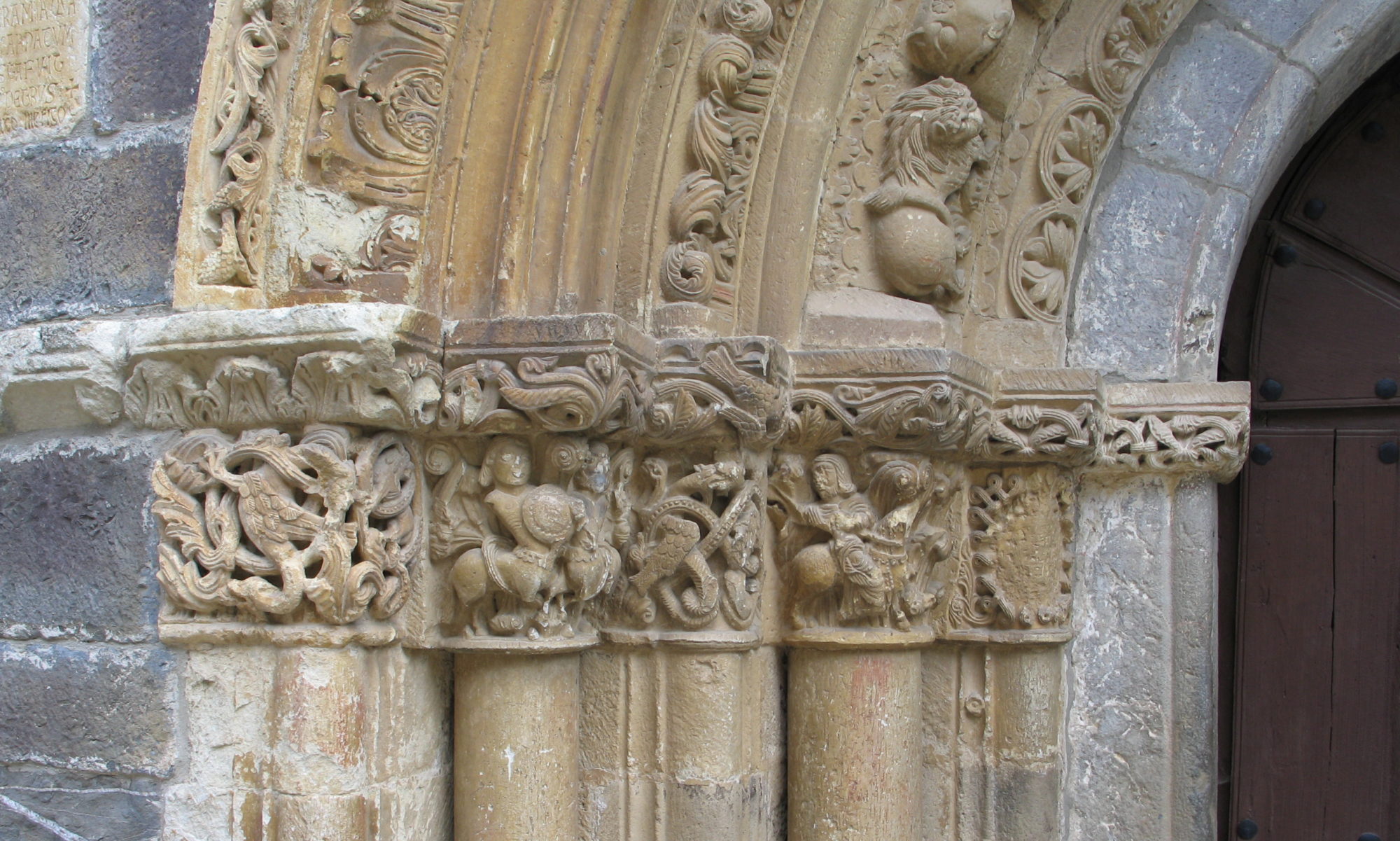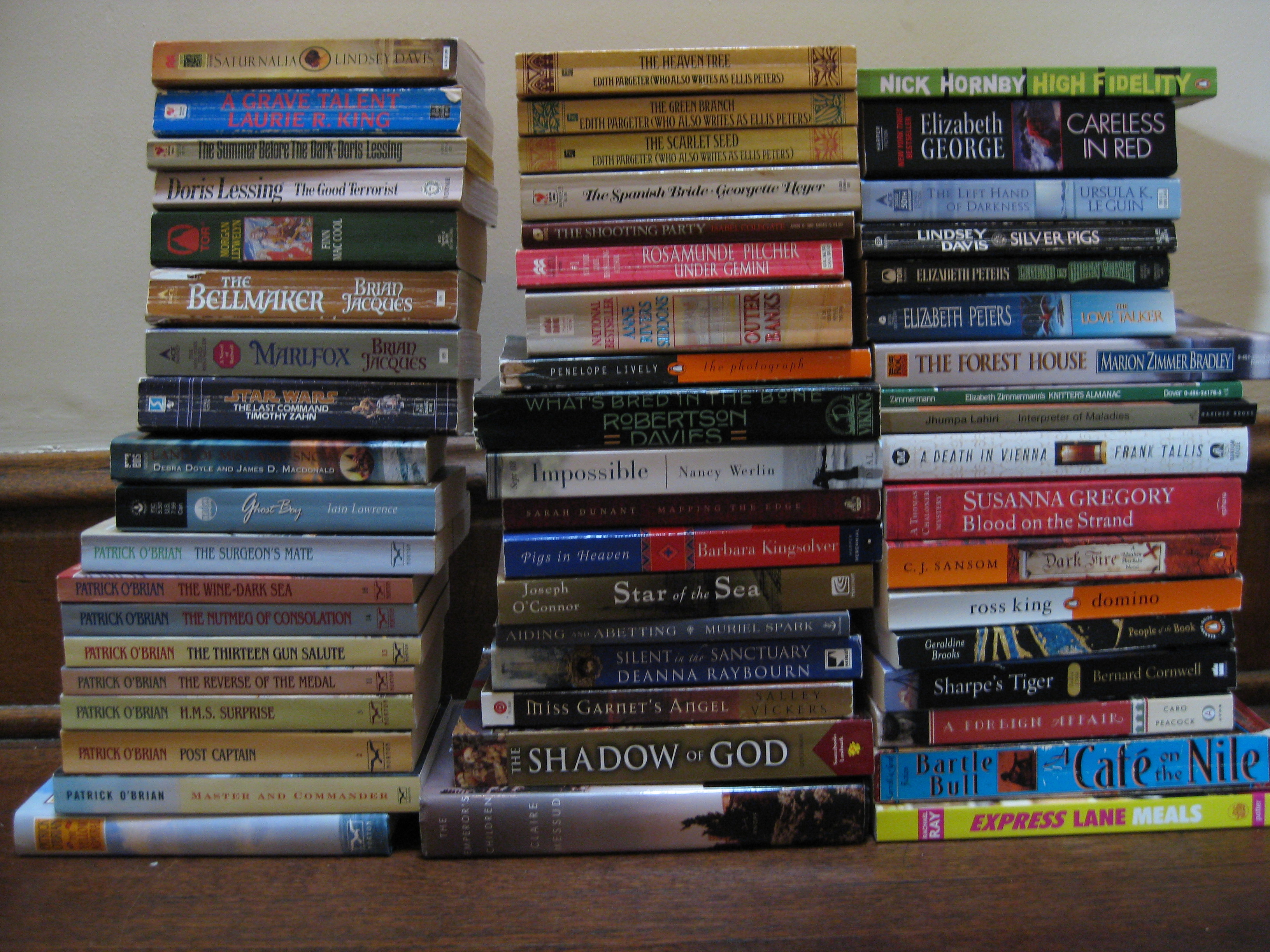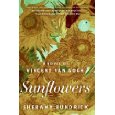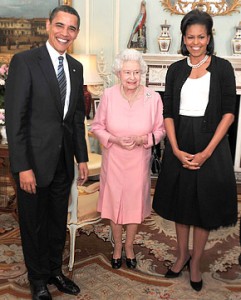In Publisher’s Marketplace:
Dutch rights to Alison Pick’s THURSDAY’S CHILD, to Orlando, at auction, by Margaret Halton at Rogers, Coleridge & White, on behalf of Anne McDermid at Anne McDermid & Associates.
Congratulations, Alison!

Reading and Writing History and Fiction (and sometimes food)
In Publisher’s Marketplace:
Dutch rights to Alison Pick’s THURSDAY’S CHILD, to Orlando, at auction, by Margaret Halton at Rogers, Coleridge & White, on behalf of Anne McDermid at Anne McDermid & Associates.
Congratulations, Alison!
I’m pointing you outside my blog today, to a post I wrote for the web journal Sightings, published by the Martin Marty Center. As many of you know, I wrote my dissertation and first book on anti-Jewish religious polemic in the Middle Ages, and the way it was used to define Christians and separate them from those with different beliefs. When I read the address Pope Benedict XVI gave at Regensburg on reason and faith in 2006, it upset me greatly because I had the sense he was arguing for a return to twelfth-century modes of inter-religious understanding — or misunderstanding as it might be. But I wasn’t moved to write until a couple of weeks ago, when I read a new address he gave praising one of the architects of this understanding, Peter the Venerable. Here’s the first paragraph, and the link that follows will take you to the full text:
n his general audience in St. Peter’s Square on October 14th, Pope Benedict gave an address in which he held up the twelfth-century monk and abbot of Cluny, Peter the Venerable, as a model for contemporary Christians, lay and monastic, praising him for his ability to balance both contemplative spirituality and the demands and pressures of the world. Peter was an unusual choice. Though the pope associated him with the abbey’s canonized abbots, quoting his papal predecessor Gregory VII that at Cluny, “there was not a single abbot who was not a saint,” Peter in fact was never canonized. Why select him as a model over other Benedictine contemplative administrators, not least Saint Benedict himself, who could provide the same example of tranquility in the face of turmoil? What makes Peter stand out from his brethren at this moment in time?
http://divinity.uchicago.edu/martycenter/publications/sightings/archive_2009/1029.shtml

As promised, here’s a photo of my treasures from the annual Hyde Park used booksale. Missing from the photo are a couple of gifts, but otherwise, they’re all here, 50 books for around $30. Taking a look at my piles, I can see why I have a hard time answering “What’s your favourite genre?” questions. I truly do read a little of everything. But they’re not all mine. Most of the left-hand stack are for my son, especially all the Patrick O’Brians. And the Star Wars. But you knew that.
(Click the photo for a larger view)
 I am breaking my long blog silence (permanently — there will be many more posts in the next few days and weeks) for a very good cause, to celebrate the release today of Sheramy Bundrick’s debut novel, Sunflowers, published by Avon, about the story of Vincent van Gogh. I met Sheramy at the Historical Novel Society conference in June, and have been eagerly awaiting for this release.
I am breaking my long blog silence (permanently — there will be many more posts in the next few days and weeks) for a very good cause, to celebrate the release today of Sheramy Bundrick’s debut novel, Sunflowers, published by Avon, about the story of Vincent van Gogh. I met Sheramy at the Historical Novel Society conference in June, and have been eagerly awaiting for this release.
You can go here to enter a contest to win a copy of Sheramy’s book. Julianne has a review of the novel up there on her site today as well.
I felt like the last part of my childhood died today.
I know a lot of people have said that by now, but that’s because sometimes a cliche is true. To my son, Michael Jackson is nothing more than a set up line in a joke about pedophilia, but like so many others, I grew up with him. For me, he was in the background, not centre stage, but always present, from the Saturday morning cartoon show to the explosion of “Off the Wall” — which made a much greater impact on me than “Thriller.” I’ve always loved his dancing more than his music, though some of his songs are still iconic for me. “Billie Jean” was high school graduation. I still have an old cassette tape somewhere that has Yaz’s first album on the A side and then Altered Images, ABC “The Look of Love,” Men Without Hats “Safety Dance,” and “Billie Jean” on the flip side.
My relationship with Farrah is far more complicated. She hit on the very cusp of my homely adolescence and what that poster said to me and to a generation of young women was, “You will never, ever be good enough. You will never be who someone wants.” When we played “Charlie’s Angels” in the playground, I knew instinctively that the most I could attempt was Kate. And that’s sad, because, given her choice of roles in later life, intimidating a crowd of teenage girls was probably the last thing Farrah ever wanted to do.
I think this video is as good as any to close with because it shows Michael at one of his most admirable moments, and also encapsulates the era I’m saying goodbye to as well as anything could.
I have to laugh at the status-consciousness of some (very few) of the people in my field sometimes. For the four or five of us who haven’t figured this out yet, fifteen minutes away from the Medieval Academy Meeting, to paraphrase Pierre Trudeau, you could be the most published, beloved, reprinted, honorary degreed, endowed medieval historian in the world, and nobody will know your name.
What I didn’t realize until this week, was that much the same can be true in the fiction publishing world. I met Diana Gabaldon on the weekend, and I have spent much of the week trying to impress my friends with the coolness of this and being met with “Who’s she?” or “I *think* I’ve heard that name.” And this is from people who read, and who read fiction at that. It goes to show that you can be a New York Times best-selling writer whose books normally make that list with a publishing career that has spanned decades, and still people will say, “Ummm…”
Anyway, I met Diana Gabaldon on the weekend, and she was lovely. Friendly and warm, and not in a “I will tolerate you while you gush all over me” way, but in an “I will join you and your friends on the couch and we can talk about how to write sex scenes” kind of way. Very impressive.
I spent last weekend in Schaumburg at the Historical Novel Society conference meeting old friends and new, and thinking hard about what it takes to write a compelling historical novel. I was going to write a full post about the conference but all my procrastination has meant that Julianne Douglas got there before me, and I must concur with everything she said. She even went to most of the panels I attended, so go on over there if you want to see what I thought!
I was tagged in this reading meme over on Facebook ages ago, and I never answered. I’ll post my answers over there too, but my blog seemed like a better place for it.
1. What author do you own the most books by?
Well, I own all the Dorothy Dunnetts, including one of the mysteries so she probably wins. Also close would be Mary Wesley and Carol Shields. I can see Alice Hoffman creeping up behind them in the next few years.
2. What book do you own the most copies of?
I own two copies of Carol Shields’s Republic of Love — a paperback, because it has the perfect cover and I can’t let it go (Mum? You know that copy you’re missing,well, erm…heh.) and a hardcover that I bought at the coop used book sale and found it was signed by the author once I got it home.
3. Did it bother you that both those questions ended with a preposition?
Didn’t notice. If they had confused “fewer” with “less” I would have been really upset, however.
4. What fictional character are you secretly in love with?
Is it too utterly wet to admit I have kind of a crush on the hero of the first novel I wrote? And does it count when they are a figment of your imagination, not someone else’s? Apart from that I fear I am a bit of a literary flirt. I can fall madly in love with a character for the length of a novel, and then forget his name once I am finished with the book.
5. What book have you read the most times in your life (excluding children’s picture books)?
Probably either A Tangled Web, The Blue Castle, or Rliia of Ingleside, all by L.M. Montgomery. I am a re-reader though. I read all my favourites many times over.
6. What was your favorite book when you were ten years old?
See the answer to number 5. I’ll also add Eloise Jarvis McGraw’s Greensleeves. I still get something out of that book when I reread it.
7. What is the worst book you’ve read in the past year?
Heh. A certain nameless novel about Barcelona. (Not Shadow of the Wind, which I loved). I learned a lot from it though.
8. What is the best book you’ve read in the last year?
This has been a good twelve months for reading, but I’m going to pick Diane Setterfield’s The Thirteenth Tale for sheer satisfaction.
9. If you could force everyone to read one book, what would it be?
J.R.R. Tolkien’s Lord of the Rings. Hah. And I’d make them read the poetry out loud. Aren’t you all glad I don’t run the world?
10. Who deserves to win the next Nobel Prize for literature?
Difficult, because Doris Lessing just won. I’ll say A.S. Byatt.
11. What book would you most like to see made into a movie?
Vikram Chandra’s Sacred Games
12. What book would you least like to see made into a movie?
I wish I could unsee Possession.
13. Describe your weirdest dream involving a writer, book, or literary character.
I don’t think I’ve ever dreamed about any of these things.
14. What is the most lowbrow book you read as an adult?
I skimmed the Da Vinci Code.
15. What is the most difficult book you’ve ever read?
Derrida’s Of Grammatology. I haven’t got past the Spivak introduction yet. Oh, you mean fiction? Fiction’s not difficult.
16. What is the most obscure Shakespeare play you’ve ever seen?
Probably one of the Henry’s, and I don’t even remember which one…
17. Do you prefer the French or the Russians?
The Russians, of course!
18. Roth or Updike?
Um, I read Witches of Eastwick, and it was fine and all, but…
19. David Sedaris or Dave Eggers?
Oh, please.
20. Shakespeare, Milton, or Chaucer?
Shakespeare. yes, i know I’m a medievalist, but Chaucer isn’t even close.
21. Austin [sic] or Eliot?
Can I trust a literary meme that can’t even spell Jane Austen’s name correctly? I’ve read one Eliot (Middlemarch) and every single Austen that has a beginning, middle, and end, and I’m still going to pick Eliot.
22. What is the biggest or most embarrassing gap in your reading?
Nineteenth and twentieth century fiction from the United States. I’ve read almost none.
23. What is your favorite novel?
Doris Lessing’s The Golden Notebook
24. Favorite play?
Macbeth. And everything of Tom Stoppard’s that I’ve read or seen.
25. Favorite poem?
John Donne is my favourite poet, but my favourite poem of his depends on my mood.
26. Favorite Essay?
Laurie Colwin’s food writing.
27. Favorite short story?
While she’s on my mind, Colwin’s “St. Anthony of the Desert.” Or any of hers, really. I also like Melissa Bank.
28. Favorite work of nonfiction?
I’m going to pick Barbara Tuchman’s A Distant Mirror
29. Favorite writers?
See above.
30. Who is the most overrated writer alive today?
Quoting Julianne: “If you can’t say something nice…”
31. What is your desert island book?
Why wouldn’t I take my favourite book to a desert island? Besides, The Golden Notebook is nice and long.
32. What are you reading now?
Jasper Fforde’s The Eyre Affair. Fun.
Any question you find especially interesting? Answer it in the comments!

(No, I’m not going to talk about The Hug) When I saw this photo on the newspapers this morning, it reminded me of when I was a little girl. Whenever the table manners of my sister and I left anything to be desired (which was often), my mother would chide us by asking how we thought the queen would respond to our disgusting habits. “Would you eat like that if the queen were here?” she’d ask when we switched our fork from hand to hand. “What if the queen came to tea?” she’d say when we buttered and jammed a whole piece of bread in one go, instead of just the part that was about to go into our mouths. And the worst threat of all: “What if you get invited to Buckingham Palace some day? Will you behave like this there?”
I always thought this was just a special little behavioural modification strategy of our family, maybe shared with a few other British ex-pats with a longing for the good order of the home country. But to my great surprise, when I was working my way through the Yarn Harlot’s archive, I found the following quotation (you’ll have to scroll down a fair way through the link I provided, just past the photo of the —erm— sock photographed in front of the monument to Queen Victoria to find the bit Im citing):
The flag was flying, so I know the Queen was home, but I didn’t see her, but I stood there in the rain, thinking about all the times [my grandfather] reminded me of my manners, saying “Careful now, or you’ll never be invited to the palace” and I remembered how as a little girl, I thought that was an entirely possible thing.
So it wasn’t just my mother! Because I thought being invited to the palace was an entirely possible thing for me too. Is this perhaps a broader Canadian phenomenon? I started to wonder.
And then I began to wonder about Americans. Whom do their parents hold up as paragons of good behaviour? Presidents? Somehow I can’t quite picture it (“Eat your broccoli! Ronald Reagan loves broccoli!”), and that difference may explain a lot about a lot of things.
But who knows? I think back to a conversation I had with my son a week or so ago, when I drove him and some of his friends to an academic olympics competition at a school in Englewood. “We’re going to be the only white kids there,” my son said worriedly, though I don’t know exactly what he was worried about. “That’s okay,” I said, “It might be a good experience for you to see what it feels like to be in the minority.”
“Besides,” I continued, “Think of what it must have been like for Barack Obama at Harvard Law School.”
Bonus Joke Content, also from the Yarn Harlot: How do you get 50 drunk and rowdy Canadians to get out of your pool.”
Say, “Would you please get out of my pool?”
Or, I suppose, tell them that the queen is turning up.
Spotted today in Publisher’s Marketplace:
Alison Pick’s THURSDAY’S CHILD, a story about love, hope and betrayal within an affluent Jewish family in Prague during the lead-up to Hitler’s invasion of Czechoslovakia, to Lynn Henry of House of Anansi, in a pre-empt, by Anne McDermid Associates.
That’s my cousin! Check out her website in my links. I’ve read this novel and it is wonderful. There are many novels about the war and the Holocaust, but this one is very different, about a place and a moment that is seldom described. To me, she gets the feel of Czechoslovakia as it fell to Hitler absolutely perfectly and the story is gripping and beautifully written. Her publisher is going to be very happy they picked up this book.
Maybe I’ll do a blog interview of Alison when her book is released. Hmm. *plots*